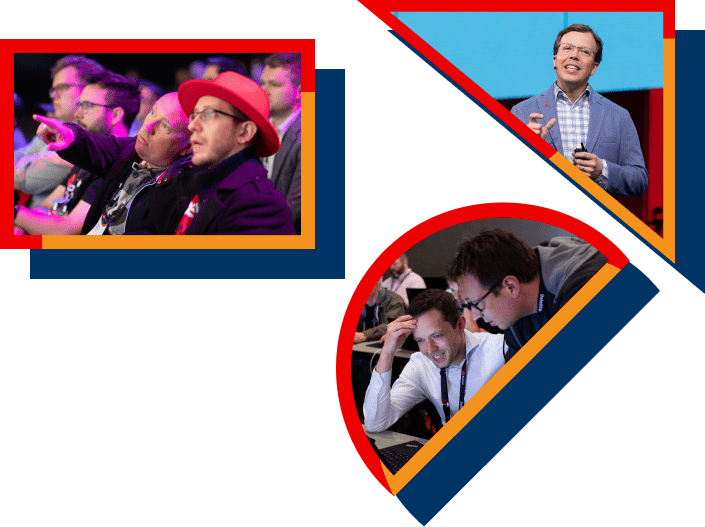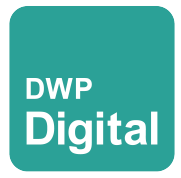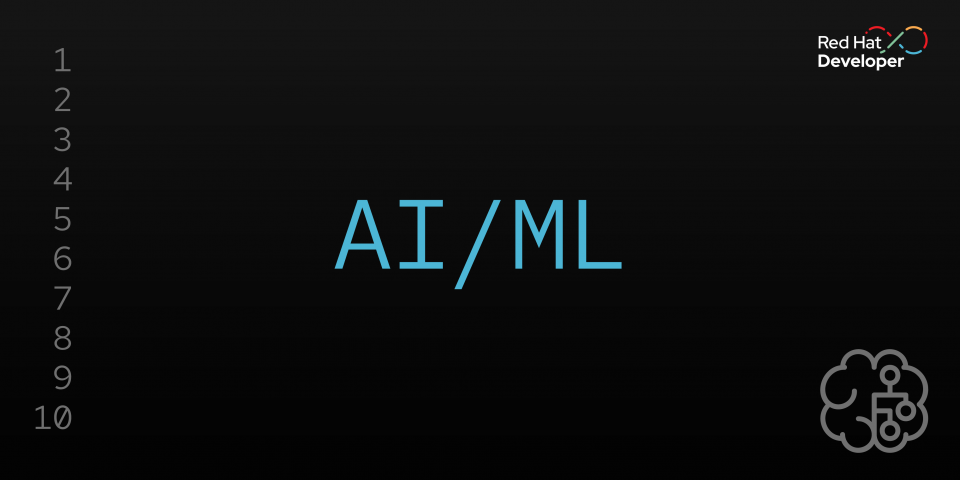
RedHat Open Tour 2023
Red Hat is bringing a special event in collaboration with industry experts. Come join us in a lively conversation on DevOps methodologies, the exciting world of Kubernetes, Openshift, and more
September 13, 2023
8:30 - 17:00
Stockholm, Sweden

Meet Our Team
R asheed Amir
Rasheed is the CEO of Stakater AB, a Kubernetes enablement company. Rasheed has been a Kubernetes and OpenShift aficionado in Stockholm since the early days of these technologies!

Quang is a co-founder and head of partnerships at Stakater. Quang is passionate about constantly improving cloud technology and has deep expertise in developing scalable web systems

Karl Johan Grahn
Karl is the Engineering Manager at Stakater and leads teams across multiple products. He is passionate about delivering cutting-edge DevSecOps products and services with a focus on quality and automation.

Kent Löndahl
Kent is the head of consulting at Stakater. He is an experienced technology leader and has been an active player in the Sweden technology eco-system for a long time.

Lunch & Learn Session
Curious about making openshift work for multiple tenants or teams.
for an insightful conversation on setting up multi-tenant environments with OpenShift. We'll take you through our real-world experiences managing services on OpenShift.
OpenShift provides a solid foundation, but building multi-tenant setups comes with its share of challenges. We'll break down these challenges in simple terms and suggest practical solutions that have proven effective in our journey.
Learn how multi-tenancy can actually make your life easier.
At this session, Rasheed will talk about how it helps optimize resources and makes managing things smoother. We've got some interesting stories to share about how businesses have benefited from multi-tenancy.
Red Hat Partner Training
Our training offerings help you improve customer experiences, deliver Red Hat related services, and increase your sales. By using your partner login for our training portal, you can explore ways to expand and validate your knowledge of Red Hat and grow your business.

Explore everything that our training portal has to offer
As new IT challenges emerge, our training program expands. We’ve included new learning experience strategies focused on connected, intelligent, and personalized learning outcomes. Our online learning enablement platform supports your organization’s learning journey through role-specific training and skills validation .
Benefits of the Red Hat Partner Training Portal
Solve customer challenges, extension of red hat, global availability, learn at your own pace, partner stories.

Explore all the new features of the Red Hat Ecosystem Catalog
Red Hat® Ecosystem Catalog® is where customers go to discover partner capabilities and solutions, and our new updates have made the catalog even easier to use. Learn more about how you can make the most of the new functionality.

Bring our technology to life with product demos

Let’s get started
Begin your learning journey by using your partner login for the Partner Training Portal.
Red Hat Products
- Red Hat Enterprise Linux
- Red Hat OpenShift
- Red Hat Ansible Automation Platform
- Cloud services
- See all products
Tools & Resources
- Partner training
- Partner subscriptions
- Red Hat Ecosystem Catalog
- Red Hat Developer
- Red Hat Customer Portal
Communicate
- Website status
- Contact partner support
About Red Hat Partner Connect
The Red Hat partner ecosystem is a catalyst for open innovation. It connects partners with a thriving network of companies, expertise, and opportunity. With Red Hat, there are multiple paths to partnership and the flexibility to adapt as your business needs change. We work to help you achieve financial success on your terms.
- About Red Hat
We’re the world’s leading provider of enterprise open source solutions—including Linux, cloud, container, and Kubernetes. We deliver hardened solutions that make it easier for enterprises to work across platforms and environments, from the core datacenter to the network edge.
Red Hat legal and privacy links
- Contact Red Hat
- Red Hat Blog
- Diversity, equity, and inclusion
- Cool Stuff Store
- Red Hat Summit
- Privacy statement
- Terms of use
- All policies and guidelines
- Digital accessibility
Platform products
- Red Hat Enterprise Linux A flexible, stable operating system to support hybrid cloud innovation.
- Red Hat OpenShift A container platform to build, modernize, and deploy applications at scale.
- Red Hat Ansible Automation Platform A foundation for implementing enterprise-wide automation.
- Start a trial Assess a product with a no-cost trial.
- Buy online Buy select products and services in the Red Hat Store.

Featured cloud services
- Red Hat OpenShift Service on AWS
- Red Hat OpenShift AI
- Microsoft Azure Red Hat OpenShift
By category
- Application platform
- Artificial intelligence
- Edge computing
- IT automation
- Linux standardization
By organization type
- Financial services
- Industrial sector
- Media and entertainment
- Public sector
- Telecommunications
By customer
- British Army
- HCA Healthcare
- Macquarie Bank
- Tata Consultancy Services
- Search all success stories
- Open Innovation Labs
- Technical Account Management
Training & certification
- All courses and exams
- All certifications
- Verify a certification
- Skills assessment
- Learning subscription
- Learning community
- Red Hat Academy
- Connect with learning experts
- Red Hat System Administration I (RH124)
- Red Hat OpenShift Administration II (DO280)
- Red Hat Certified Engineer (RHCE)
- Application modernization
- Cloud computing
- Cloud-native applications
- Virtualization
See all topics
What are cloud services?
- What is edge computing?
- What is hybrid cloud?
- Why build a Red Hat cloud?
- Cloud vs. edge
- Red Hat OpenShift vs. Kubernetes
- Learning Ansible basics
- What is Linux?
More to explore
- Customer success stories
- Events and webinars
- Podcasts and video series
- Resource library
- Training and certification
For customers
- Our partners
- Red Hat Ecosystem Catalog
- Find a partner
For partners
- Partner Connect
- Become a partner
- Access the partner portal
- Our company
- How we work
- Our social impact
- Development model
- Subscription model
- Product support
Open source
- Open source commitments
- How we contribute
- Red Hat on GitHub
Company details
- Analyst relations
Communities
- For system administrators
- For architects
- Customer advocacy
Recommendations
As you browse redhat.com, we'll recommend resources you may like. For now, try these.
- All Red Hat products
- Tech topics
- Red Hat resources
Select a language
- Training & services
You're logged in to redhat.com as [preferred_username] .
[email or email_verified] Account number: [org.account_num] Manage account
- Customer support
My support cases
Product downloads
More cloud choice. Less cloud management.
Build applications your way and launch on any cloud with Red Hat® OpenShift®—part of a portfolio of solutions that helps you defy constraints.

Build your Red Hat Summit and AnsibleFest agenda
This year’s session catalog—offering 300+ keynotes, breakout sessions, hands-on labs, and more—is now available.
Still need to register? Sign up now .

Red Hat is the leading provider of enterprise open source software solutions
Enterprises around the world trust our broad portfolio of hybrid cloud infrastructure, application services, cloud-native application development, and automation solutions to deliver IT services on any infrastructure quickly and cost effectively.
More than 90% of companies in the U.S. Fortune 500 continue to rely on Red Hat.
Source: Red Hat® client data and Fortune 500 list for 2023 (subscription required)
Build on a reliable foundation. Take your apps anywhere.
Red hat enterprise linux.
Support application deployments—from on premise to the cloud to the edge—in a flexible operating environment.
Available on
- Red Hat OpenShift
Quickly build and deploy applications at scale, while you modernize the ones you already have.
- Red Hat Ansible Automation Platform
Create, manage, and dynamically scale automation across your entire enterprise.
Featured product
Red Hat OpenShift AI
Develop, train, serve, and monitor models and AI-enabled applications on-premise and in the cloud.
Organizations succeeding with Red Hat
Recommended for you.

Trust us with your DevOps implementation
Red Hat has been recognized in the 2023 Gartner® Magic Quadrant™ for DevOps Platforms.


As edge grows, so does your potential.
Get closer to data—and end users—when you extend your IT to the edge.
All about cloud computing
- Cloud basics
- Red Hat® OpenShift®
- Related training
- Related certifications
Building enterprise-ready solutions with open source
We believe using an open development model helps create more secure, stable, and innovative technologies. By collaborating with open source communities, we’re developing software that pushes the boundaries of technological ability.

Tech topics worth exploring
Understanding ai.
Artificial intelligence (AI) refers to systems that can acquire and apply knowledge, and carry out behavior based on that knowledge.
The bank cut verification times from days to minutes with an AI-based natural language processing solution.
Understanding APIs
Application programming interfaces (APIs) let your products and services communicate with other products and services without having to constantly build new connectivity infrastructure.
API management helped Lufthansa Technik optimize airline operations.
Understanding automation
Automation is the use of technology to perform tasks without human assistance. In tech, automation is found in IT systems and business decision software.
The British Army sped up service delivery by automating management.
Understanding cloud computing
Clouds are IT environments that abstract, pool, and share scalable resources across a network.
The airline improved customer service by implementing a modern hybrid cloud.
Cloud services are infrastructure, platforms, or software hosted by third-party providers and made available to users through the internet.
The software company consolidated its legacy foundation onto a single platform with Red Hat OpenShift Service on AWS.
Understanding Linux containers
Containers let you package and isolate applications with their entire runtime environment, making it easier to move the contained app between environments.
The workers’ compensation insurance provider increased new sales by 40% by adopting a responsive cloud and container environment.
Understanding DevOps
DevOps is an approach to culture, automation, and platform design intended to deliver increased business value and responsiveness through rapid service delivery.
BP coupled a container platform with DevOps to speed provisioning.
Understanding digital transformation
Digital transformation integrates new technology and applications into your existing infrastructure to fundamentally change how it operates.
The bank embraced digital transformation by building an app dev platform.
Understanding edge computing
Edge computing places compute resources at or near users or data sources—outside of traditional, centralized datacenters or clouds.
The telecommunications provider built a standalone 5G core to enable robust connectivity and edge computing solutions.
Understanding enterprise integration
Enterprise integration has evolved from a centralized model with an enterprise service bus (ESB) to a distributed architecture with many reusable endpoints.
Integrating apps and data on a private cloud let the bank launch innovative services.
Understanding Linux
Linux® is the stable foundation for all IT workloads and deployments—whether traditional or innovative—from bare metal to virtual, cloud, and containers.
Elo cut time to market with agile, on-demand infrastructure built on Red Hat Enterprise Linux.
Understanding microservices
Microservices are an architecture and an approach to writing software where apps are broken down into their smallest components, independent from each other.
This bank used microservices to modernize its IT environment.
Understanding middleware
Middleware is any software between the kernel and user applications that provides services to apps outside of what’s offered by the operating system.
Middleware helps the Dutch airport provide seamless journeys to customers.
Understanding IT security
IT security protects the integrity of information technologies like computer systems, networks, and data from attack, damage, or unauthorized access.

The government agency built a data-sharing ecosystem that maintains security and compliance.
Understanding virtualization
Virtualization makes a single physical machine act like multiple—saving you the cost of more servers and workstations.
Virtualization trimmed deployment times from weeks to hours for this provider.

Build on the cloud today
The Red Hat Hybrid Cloud Console lets teams get started quickly on business-critical tasks, from building and installing operating environments, to monitoring for potential vulnerabilities, to accessing certified automation, and more.
- Red Hat Enterprise Linux
- Cloud services
- See all products
- Developer resources
- Red Hat value calculator
Try, buy, & sell
- Product trial center
- Red Hat Marketplace
- Red Hat Store
- Buy online (Japan)
Communicate
- Contact sales
- Contact customer service
- Contact training
- About Red Hat
We’re the world’s leading provider of enterprise open source solutions—including Linux, cloud, container, and Kubernetes. We deliver hardened solutions that make it easier for enterprises to work across platforms and environments, from the core datacenter to the network edge.
Red Hat legal and privacy links
- Contact Red Hat
- Red Hat Blog
- Diversity, equity, and inclusion
- Cool Stuff Store
- Red Hat Summit
- Privacy statement
- Terms of use
- All policies and guidelines
- Digital accessibility
Create a Red Hat OpenShift AI environment

Red Hat OpenShift AI combines the scalability and flexibility of containerization with the capabilities of machine learning and data analytics. With Red Hat OpenShift AI, data scientists and developers can efficiently collaborate, deploy, and manage their models and applications in a secure and streamlined environment. Snorkel is an open source Python library for programmatically building training datasets without manual labeling. It was created in 2017 to support reproducibility of early research papers on programmatic labeling and weak supervision.
In this tutorial, you will learn how to create an OpenShift AI environment and walk through 2 Snorkel tutorials provided by the Snorkel open source library, one for data labeling and for information extraction. This tutorial uses the Snorkel open source Python library. This is different from—though related to—Snorkel AI. The team that developed the Snorkel open source project founded Snorkel AI to continue building on their core ideas. They have since built the Snorkel Flow AI data development platform, which is neither free nor open source. For information on the Snorkel project, visit snorkel.org . For information on Snorkel AI the company, visit snorkel.ai .
Prerequisites
For this tutorial you will need Red Hat OpenShift 4.14 with OpenShift AI and access to the open source Snorkel library .
Install OpenShift AI
OpenShift AI can be installed from the OpenShift web console. Navigate to the Operators tab and select OperatorHub . In the text box, type red hat openshift data science , select the Red Hat OpenShift Data Science operator, and click Install (Figure 1).

To start the installation, click the blue Install button again. You can check to see if our operator successfully deployed under the Operators tab and select Installed Operators (Figure 2).

Now that our operator has successfully deployed, click it and create a new Data Science Cluster instance (Figure 3).

We don't need to make any changes to the default settings, so we'll just click Create . If you would like to use an accelerator, it’s recommended to prepare that before accessing the OpenShift AI dashboard (Figure 4).

Once this has successfully deployed, we'll now access our OpenShift AI dashboard. On the administrator menu, head to Networking and click Routes . In Routes, we're going to change the project to redhat-ods-application , which is where we can access the address to our OpenShift AI application (Figure 5).

There should only be one route available, so go ahead and click the address to take you to the OpenShift AI dashboard (Figure 6).

Create a new data science project
Now we're going to set up our Jupyter environment so we can run the Snorkel tutorials by creating a new data science project. In the left side menu, navigate to the Data Science Projects tab (Figure 7).

Next, click Create data science project . Type your preferred project name (in our case, snorkel ) and click Create . This is the namespace where all the resources tailored to this demo will be deployed (Figure 8).

Create workbench
Inside our project, select Create workbench . This will guide us to the workbench configuration page. Complete the fields to match the following:
- Name : snorkel (or insert your preferred name)
- Image selection : PyTorch
- Version selection : 2023.1
- Container size : Small
- Check the Create new persistent storage box.
- Name : snorkel (or insert your preferred name)
- Persistent storage size : 20 GiB
Once you've completed the form, click Create workbench . You should be taken to the project home page. Once the workbench has finished provisioning, click Open to access the workbench. Log in with your OpenShift credentials and allow the selected permissions (Figure 9).

Snorkel open source tutorials
Now that we're in our Jupyter environment, let's clone the Snorkel repository. On the left, select the Git logo and click Clone a repository and paste the repository URL:
See Figure 10 for the Git logo icon and Figure 11 for the field to input the repository URL.

Now that we've cloned the repository, we're going to try out the spam and spouse tutorials (which you can find in the directories with the corresponding name). Both notebooks are incredibly detailed, as they walk you through and explain at length each step. These tutorials can serve as a reference point when using Snorkel API in the future.
The spam tutorial is a data labeling exercise that shows you how to build a training set for classifying YouTube comments as spam or not spam. To access it, enter the spam directory and begin with 01_spam_tutorial.ipynb . This is the first of 3 notebook files to walk through data labeling, augmentation, and slicing. It's an introductory tutorial and it is one avenue you could perform data labeling within OpenShift AI utilizing Snorkel.
The spouse tutorial is a little more complex, it walks through how to utilize Snorkel for information extraction by using keywords and distant supervision. In this tutorial, you will learn how to identify and classify someone's spouse utilizing labeling functions and models to do so. To begin this tutorial, enter the spouse directory and open spouse_demo.ipynb . This exercise is to demonstrate how simple it is to integrate Snorkel's libraries and tools with your OpenShift AI environment.
Now that you’ve walked through the tutorial, the Snorkel open source library is now available on your OpenShift AI environment. For more information on Snorkel, you can visit their websites to learn more about the Snorkel project and their AI services .
If you would like to try out OpenShift, you can with our Developer Sandbox using a no-cost trial. Learn more about OpenShift and our AI initiatives .
- Red Hat Enterprise Linux
- Red Hat OpenShift
- Red Hat Ansible Automation Platform
- See all products
- See all technologies
- Developer Sandbox
- Developer Tools
- Interactive Tutorials
- API Catalog
- Operators Marketplace
- Learning Resources
- Cheat Sheets
Communicate
- Contact sales
- Find a partner
Report a website issue
- Site Status Dashboard
- Report a security problem
RED HAT DEVELOPER
Build here. Go anywhere.
We serve the builders. The problem solvers who create careers with code.
Join us if you’re a developer, software engineer, web designer, front-end designer, UX designer, computer scientist, architect, tester, product manager, project manager or team lead.
Red Hat legal and privacy links
- About Red Hat
- Contact Red Hat
- Red Hat Blog
- Diversity, equity, and inclusion
- Cool Stuff Store
- Red Hat Summit
- Privacy statement
- Terms of use
- All policies and guidelines
- Digital accessibility
We use cookies on our websites to deliver our online services. Details about how we use cookies and how you may disable them are set out in our Privacy Statement . By using this website you agree to our use of cookies.
Select Your Language
- Single-page
Language and Page Formatting Options
Red hat training.
A Red Hat training course is available for Red Hat Enterprise Linux
8.4.6. Using OpenSCAP to Remediate the System
- OpenSCAP performs a regular XCCDF evaluation.
- An assessment of the results is performed by evaluating the OVAL definitions. Each rule that has failed is marked as a candidate for remediation.
- OpenSCAP searches for an appropriate fix element, resolves it, prepares the environment, and executes the fix script.
- Any output of the fix script is captured by OpenSCAP and stored within the rule-result element. The return value of the fix script is stored as well.
- Whenever OpenSCAP executes a fix script, it immediatelly evaluates the OVAL definition again (to verify that the fix script has been applied correctly). During this second run, if the OVAL evaluation returns success, the result of the rule is fixed , otherwise it is an error .
- Detailed results of the remediation are stored in an output XCCDF file. It contains two TestResult elements. The first TestResult element represents the scan prior to the remediation. The second TestResult is derived from the first one and contains remediation results.
8.4.6.1. OpenSCAP Online Remediation
Quick links.
- Subscriptions
- Support Cases
- Customer Service
- Product Documentation
- Contact Customer Portal
- Customer Portal FAQ
- Log-in Assistance
- Trust Red Hat
- Browser Support Policy
- Accessibility
- Awards and Recognition
Related Sites
- developers.redhat.com
- connect.redhat.com
- cloud.redhat.com
Systems Status
- Red Hat Subscription Value
- About Red Hat
- Red Hat Jobs
Red Hat legal and privacy links
- Contact Red Hat
- Red Hat Blog
- Diversity, equity, and inclusion
- Cool Stuff Store
- Red Hat Summit
- Privacy statement
- Terms of use
- All policies and guidelines
- Digital accessibility

IMAGES
COMMENTS
Time: 08:00 - 18:00. Location: Clarion Hotel Sundsvall, Skepparegatan 9, 852 34 Sundsvall, Sweden. If you have any questions about the event, contact us via [email protected]. View all tour stops. LinkedIn YouTube Facebook Twitter. Red Hat & Intel Open Tour is bringing you the latest and greatest updates on Red Hat Enterprise Linux, Red Hat ...
Open Tour Sundsvall. June 21, 2022 Sundsvall, Sweden Hamnträdgården. Share. Event menu; Event menu. Our tour bus is coming back! See all event locations for the Open Tour 2023 . ... Red Hat & Intel Open Tour is bringing you the latest and greatest updates on Red Hat Enterprise Linux 9, Red Hat Ansible, Red Hat OpenShift and much more. ...
Open Tour 2022. Red Hat & Intel Open Tour is brought the latest and greatest updates on Red Hat Enterprise Linux 9, Red Hat Ansible, Red Hat OpenShift and much more on the road. Thank you to all attendees for joining us at our 12 events across the Nordics and Baltics. We hope to see you at one of our new locations for Open Tour 2023.
Red Hat Open Tour, Sundsvall only 1 week out and Stockholm 3 weeks out Use the QR code for registration at the end of the 30 Sec video (recorded at Open Tour in Gothenburg in June) or follow these ...
Red Hat & Intel Open Tour ger dig det senaste inom Red Hat Enterprise Linux, Red Hat Ansible, Red Hat OpenShift och mycket mer. Ses där! Open Tour Sundsvall 2023 redhat.com
Yesterday our team was at Red Hat Open Tour in Sundsvall, Sweden. Learn more about advancing application modernization and cloud transformation with Red Hat and Nutanix #bettertogether https ...
Join us at RedHat Open Tour 2023 on 13th September in Stocholm. Stop by to say hi or be part of our Lunch & Learn session where we discuss how to make OpenShift work for multiple tenants. Join us for an engaging webinar as we take a deep dive into Tilt, Kubernetes operator development, and local testing. Discover essential insights on ...
The Open Tour commences in India with Pune as our first stop! The Red Hat Open Tour is ready to kickstart in India and we are here to bring you the latest updates on Red Hat Enterprise Linux, Red Hat Ansible Automation Platform, Red Hat OpenShift, and a lot more. Our agenda has been carefully crafted to provide you with in-depth technical ...
RedHat Event - Red Hat Nordic Open Tour 2023 COPENHAGEN
Red Hat & Intel Open Tour is bringing you the latest and greatest updates on Red Hat Enterprise Linux, Red Hat Ansible, Red Hat OpenShift and much more. Thank you to all attendees for joining us at our 9 events across the Nordics and Baltics. We hope to see you at one of our new locations for Open Tour 2024. See dates and locations.
Formemos juntos un equipo ganador: Red Hat Open Tour en Madrid. Nuestro Open Tour visitó Madrid para impulsar el viaje transformador de vuestras organizaciones. Acompañados por Intel, abordamos desde dos perspectivas distintas, negocio y técnica, la modernización y desarrollo de aplicaciones, los servicios gestionados en la nube, la ...
Red Hat & Intel Open Tour continues after the summer break. Join us in Helsinki, Tampere, Sundsvall, Vilnius, or Stockholm. When the day is over you have been updated on the latest in the Open ...
August 08, 2019. Download (236.5 MB) jdk-11..4 Sources. OpenJDK 11 Source Code. Release date. August 08, 2019. The Red Hat build of OpenJDK is an open source implementation of the Java Platform, Standard Edition (Java SE).
What is the difference between open-vm-tools and vmwaretools ? What entitlements are needed by open-vm-tools ? Are open-vm-tools and vmwaretools available for RHEL 6 and RHEL ... We appreciate your interest in having Red Hat content localized to your language. Please note that excessive use of this feature could cause delays in getting specific ...
Red Hat Online Partner Enablement Network (OPEN) provides role-based training, at your pace, so you can grow your business. ... The Red Hat partner ecosystem is a catalyst for open innovation. It connects partners with a thriving network of companies, expertise, and opportunity. With Red Hat, there are multiple paths to partnership and the ...
Red Hat is the world's leading provider of open source solutions, using a community-powered approach to provide reliable and high-performing cloud, virtualization, storage, Linux, and middleware technologies. Red Hat also offers award-winning support, training, and consulting services. Red Hat is an S&P 500 company with more than 80 offices spanning the globe, empowering its customers ...
Navigate to the Operators tab and select OperatorHub. In the text box, type red hat openshift data science, select the Red Hat OpenShift Data Science operator, and click Install (Figure 1). Figure 1: Searching for the Red Hat OpenShift Data Science operator in OperatorHub. To start the installation, click the blue Install button again.
Fredrick Ericsson kicking off Red Hat Intel Open Tour in Stockholm. We're looking forward to a great day of learning, sharing and interacting with 700+…
OpenDaylight is a key component for customers who want to deploy a fully open-source solution and avoid possible vendor lock-in. 1.2.3. Enhanced Cloud Networking. OpenDaylight provides support for common OpenStack network virtualization requirements, and also ensures multi-tenancy, security, and isolation.
Red Hat Event - Red Hat Nordic Open Tour 2023 GOTHENBURG
Red Hat Open Tour i Sundsvall ser ut att bli bra i dag!! #Dynatrace #Redhat
8.4.6.1. OpenSCAP Online Remediation. Online remediation executes fix elements at the time of scanning. Evaluation and remediation are performed as a part of a single command. To enable online remediation, use the --remediate command-line option. For example, to execute online remediation using the scap-security-guide package, run:
Next week, Helsinki and Tallinn be prepared we are coming your way. #redhatopentour #redhat #intel #visibleworks #dreamteam